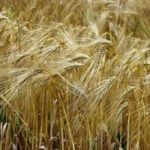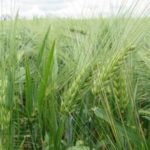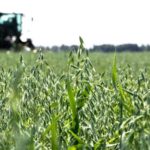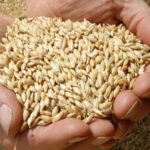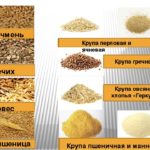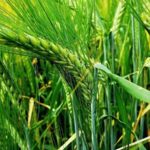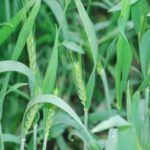Barley is a valuable food crop. Various types of cereals are made from it, feed additives for farm animals and poultry, and used in brewing. In the old days, barley obtained from barley was called pearl barley. There are winter and spring varieties of cereals. A story about the characteristics of the spring barley variety Despina will be useful to agricultural producers.
Description and characteristics of the Despina variety
German malt variety. High-yielding spring barley is grown in Russia and Ukraine. Optimal for growing in the Nizhny Novgorod region.The growing season is 75-85 days.
Refers to intermediate barley. The sheaths of the lower leaves are not pubescent. Flag leaf ears with medium to strong anthocyanin coloration. With a medium or strong waxy coating on the vagina. Short or medium-long plant. Barley with a cylindrical ear, loose or medium density, with a waxy coating (weak, medium). The awns have a medium anthocyanin color, serrated, longer than the spike. Large or very large grain. The weight of 1000 grains is 42-54 grams.
Advantages and disadvantages
The advantages of the Despina variety include:
- High yield variety.
- Friendly early germination of seeds.
- Quality malt characteristics.
- Possibility of late sowing.
Disadvantages include:
- Average resistance to drought.
- Strong susceptibility to helminthosporium.
Despina barley is not prone to powdery mildew and crop lodging. Resistant to net spot and rhynchosporium.
Seeding rate and pattern
Despina spring barley is sown in narrow-row and cross-row methods. Narrow row means that the width between adjacent rows is 7-8 centimeters. With the cross method, grains are sown into the soil first along and then across the sown area. In both cases, uniform seeding density is achieved.
Seed consumption depends on the region where the cereal is grown and the quality of the soil.Ranges from 3 to 6.5 million grains per hectare. In the southern regions the figure ranges from 100 to 160 kilograms per hectare, in the Far East and Siberia - 160-200, in the Non-Black Earth Zone - 240 kilograms. Barley does not grow well in acidic and alkaline soils. For a good barley harvest, soil with a neutral pH (6.8-7.5) is required.
Rules of care
Before storing, the seeds are treated to protect future shoots from various types of spots and root rot. Barley is sown between March and mid-May, depending on the region.
In autumn or spring, before sowing seeds, mineral fertilizers, nitrogen (ammonium nitrate, urea), phosphate (superphosphate), and potassium (potassium sulfate) are applied to the soil. They help the growth and development of plants and the ability of crops to resist fungal infections. During the growing season, additional fertilizing is done.
Spring barley is significantly clogged with weeds. Agrochemicals are used to remove harmful plants. Treatment of crops with herbicides is carried out after the emergence of crop shoots. The use of herbicides according to the manufacturer’s instructions does not affect the quality characteristics of the grain and helps to increase the yield. To protect against fungal infections, fungicides are used at different periods of the growing season (up to 3 times per season).
Insect pests are combated by observing optimal sowing times, crop rotation, and choosing resistant varieties.
Cleaning and storage
Harvesting is carried out 75-85 days after the appearance of the first shoots. Grain moisture content should not exceed 20%. Harvesting is done in dry, sunny weather, with minimal soil moisture. The duration of cleaning is 1.5-2 weeks, at a temperature not lower than +18 degrees.When assembling, take into account the cutting height of the ear (standard - 15-30 centimeters) and the direction of the ears.
Before being placed in storage, barley grain is winnowed to remove weed residues and soil particles. Additionally, the grains are dried in dryers using hot air.
Optimal storage temperature: +9-10 °C, humidity for malt variety - no more than 8%. As humidity increases and temperature decreases, the shelf life of grain is significantly reduced and quality characteristics deteriorate. Grain moisture and temperature are periodically measured in storage facilities. Compliance with storage rules allows you to preserve the quality characteristics of grain for several years.
Despina spring barley, due to its high yield and quality characteristics, has become one of the most popular malt varieties.

